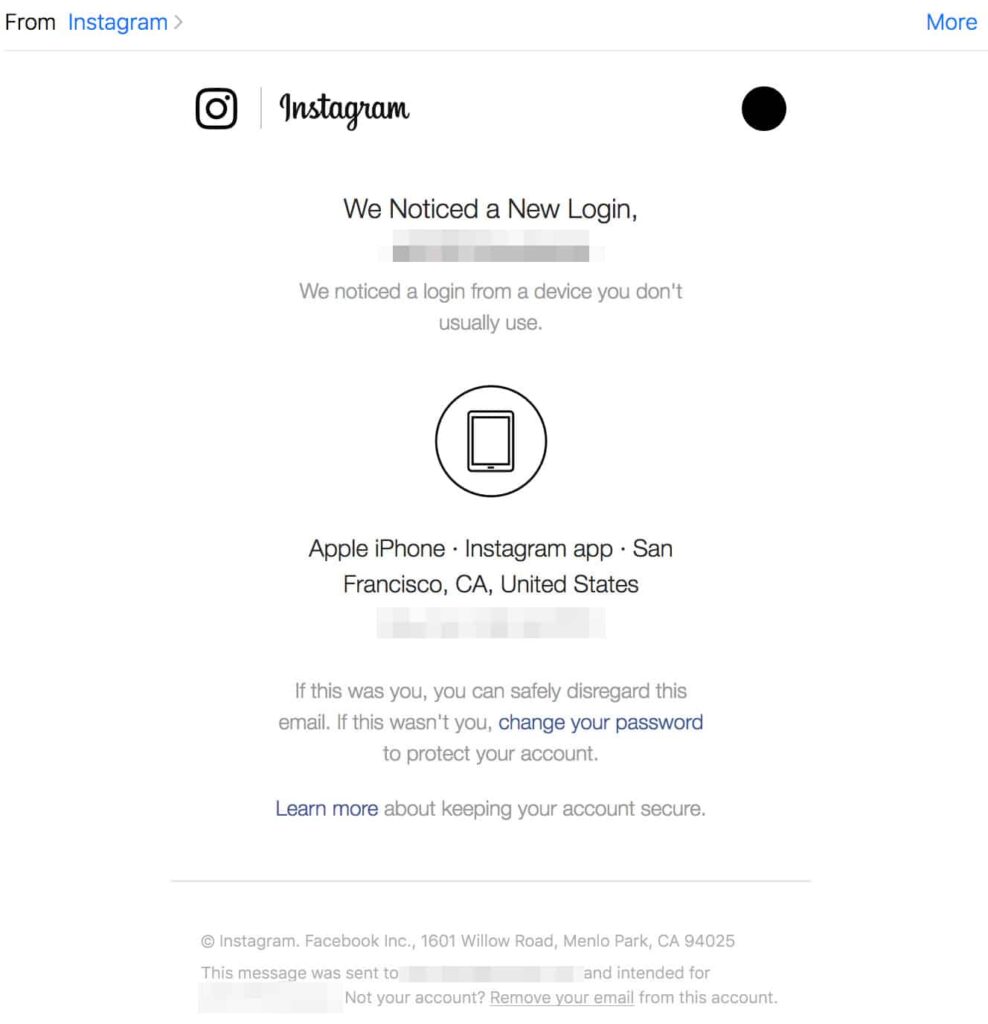Have you ever gotten an email from [email protected] and questioned its authenticity? You’re not alone. Numerous recipients have received similar emails and felt uncertain about their legitimacy.
Phishing remains one of the most common methods used to gain unauthorized access to user accounts. Typically, this cybercrime involves sending a deceptive link. Once clicked, the target is prompted to input their account details, unwittingly handing them over to the scammer. These fraudulent links often look genuine, making it hard to distinguish them from the real ones. Recently, users have encountered emails from ‘[email protected]’ and are skeptical about their legitimacy.
If you’re also uncertain about this email, there’s no need to worry. This article delves into whether the email is genuine and provides insights on avoiding phishing attempts on Instagram.
Is [email protected] Legit?
Numerous users have received correspondence from this email address, leading to doubts about its authenticity. Addressing these concerns, we’d like to confirm that this is indeed an official email from Instagram. The likelihood of receiving fraudulent phishing links from this source is minimal.
What are Phishing Emails?
Phishing emails aim to coax you into sharing personal details like usernames and passwords. While they often mimic genuine messages, some red flags indicate their inauthenticity. These include grammar or spelling errors and attempts to induce urgency or fear to prompt immediate action.
The email address [email protected] is an official one from Instagram. However, reports of phishing emails originating from this address emphasize the need to recognize warning signs of a scam.
When receiving an email from [email protected], watch out for these indicators before taking any action:
- Discrepancies in the email address, such as [email protected], signal a likely phishing attempt.
- Grammatical or spelling mistakes often denote an illegitimate email.
- Avoid clicking on links or downloading attachments; Instagram never requests this via email.
- Watch for threatening language pressuring urgent action, a tactic known as “scareware.”
When in doubt about an Instagram email, the safest action is to delete it. You can also directly contact Instagram to verify its legitimacy. Remember, refrain from clicking on links or downloading attachments from suspicious emails!

How To Identify Fake Mail Or Phishing Link?
Identifying fake emails or phishing links in your Instagram inbox becomes easier upon closer inspection. They typically exhibit distinct issues that stand out upon scrutiny.
Here are key indicators to spot them:
- Grammar errors: Fake emails often contain grammatical mistakes.
- Shortened links: Be cautious of shortened links, especially from unknown senders.
- Official notifications: Authentic Instagram notifications arrive via your inbox.
- Monetary requests or alarming tone: Avoid links or emails asking for money or employing alarming language.
- Incomplete attachments: Attachments accompanying fake emails may fail to load entirely.
Ways To Prevent Phishing Attack On Instagram
To prevent phishing attacks on Instagram, consider these measures:
- Opt for a robust password: Create a password with 14-16 characters, incorporating a mix of letters, numbers, and symbols. Avoid easily guessable passwords like your name or common phrases, as they make your account susceptible to phishing.
- Activate two-factor authentication: Enhance security by enabling two-factor authentication on your Instagram account. This adds an extra layer of protection, requiring a verification code after entering your password.
- Guard personal information: Refrain from sharing your email, phone number, or other personal details with strangers on social networks.
- Exercise caution with links and emails: Be cautious with unfamiliar links and emails. Avoid opening suspicious links unless they’re from a trusted source and don’t raise suspicion.
- Limit third-party app access: Avoid granting unnecessary permissions to third-party apps on your Instagram account or your mobile device.
- Avoid bot usage: Refrain from using bots to inflate followers, likes, or comments on your Instagram. Doing so can increase the vulnerability of your account to hacking attempts.
Conclusion – [email protected] Legit or Scam?
To wrap up, it’s essential to emphasize that [email protected] is a genuine and authorized email address used by Instagram. Yet, fraudulent emails mimicking official ones may still surface. Look out for signs of phishing, such as requests for personal details or threats regarding your account status. If you suspect a phishing attempt, promptly change your password and inform Instagram.
If you found this information helpful, consider sharing it with your friends and sharing your experience by leaving a comment below.